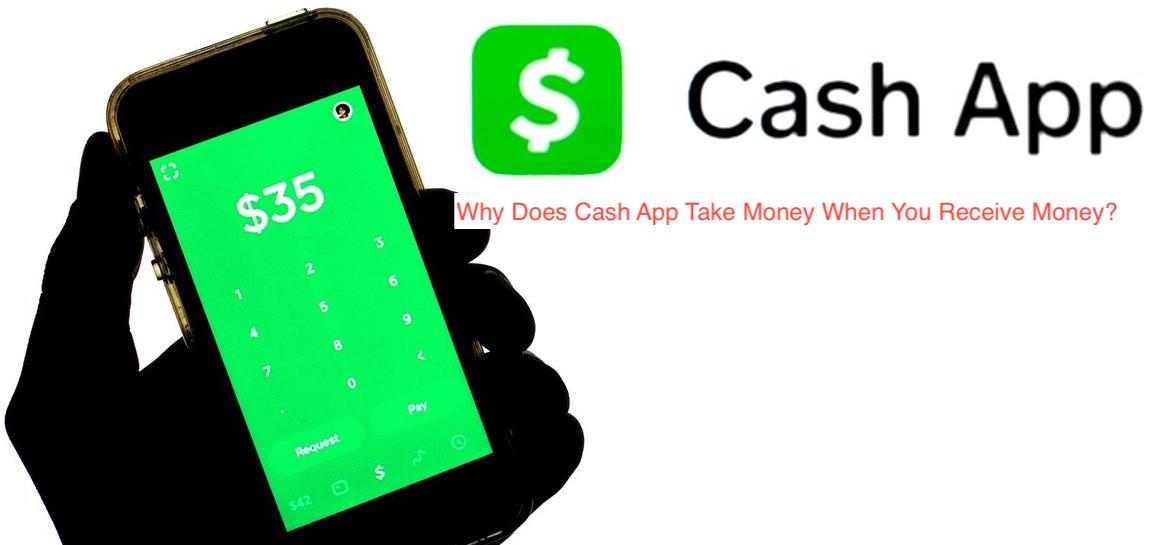Sometimes, you may notice that your Cash App balance sees a slight reduction whenever you receive money. Since Cash App is supposedly free for receiving money, trying to determine why it seems like your Cash App is taking money when you receive money is a logical concern.
Cash App doesn’t take any money when you receive a payment unto the app, regardless of the source of the payment. However, some scenarios may make it seem like you’re being charged for receiving money via Cash App.
In this article, I’ll answer the question of “why does Cash App take money when you receive money?” Besides that, you’ll also learn about some charges you’ll likely come across when using Cash App, and how to minimize them. Without further ado, let’s jump into the article.
How to Receive Money on Cash App
Before determining if Cash App is charging you for receiving money, it’s crucial to establish what scenario constitutes receiving money on the app. There are two scenarios that Cash App users think of as receiving money, and I’ll try to go through both.
The first scenario is receiving the money for your Cash App balance from someone else. If someone sends you money from Cash App on their device using your $Cashtag, you can receive the money by accepting the payment from your end.
However, some people also think of receiving money on Cash App as receiving money directly from their bank accounts. While that also counts as receiving money, it’s technically outside of the app, and thus, the no-fee policy on receiving money doesn’t apply in that scenario.
Since this section is only talking about how to receive money without getting charged, I’ll show you two different ways. Here are the two ways to receive money on Cash App, incurring no charges.
- By requesting money from another user
Before continuing, it’s crucial to note that receiving money without a charge in any way will require the sender to also have a functioning Cash App account. That way, they can send you money using your $Cashtag incurring no charges.
Besides that, requesting money to get paid requires you to know their phone number, email, or $Cashtag. If you know any of the three, you can open Cash App on your device, enter how much they’ll be paying you using the keypad, and then tap the “Request” button at the bottom left.
On the following screen, you may have to enter the identifier that you already have handy. It doesn’t matter if you have the phone number or $Cashtag, either works. When you request the money, Cash App notifies the account handler of your request, and they can either choose to accept or decline the request.
You should also know that Cash App won’t charge either of you for requesting money or declining a request. If the other party to the transaction decides to accept the request, they’ll deduct the exact amount you requested, no more, no less. Neither of you gets charged unnecessarily.
- Accepting a payment
You don’t have to request payment for someone to pay you using Cash App; they may decide to send money to your $Cashtag, and the money will be added to your balance as soon as you approve the transaction.
Accepting a payment each time won’t be necessary; you only need to accept the payment for the initial transaction. If someone has sent you money before, their subsequent transactions will simply go through with no action from your side.
If the person in question hasn’t paid you before using Cash App, confirm that they’ve indeed sent the money and open the Cash App on your smartphone. On the app, navigate to the Activity tab, which is represented by the icon of a clock at the extreme bottom right corner of the app.
On the “Pending” tab, you’ll see a list of payment requests you’ve made recently and their status. Besides that, you’ll also see some entries that represent pending payments from other Cash App users. You can press the “Accept” button next to the transaction to approve it and add the amount to your balance.
Like requesting a payment, accepting a payment from another Cash App user won’t incur any charges, either before or after the transaction. Also, the person making the transaction doesn’t have to pay any charges, unlike what we have with traditional banks.
Why Does Cash App Take Money When You Receive Money?
The two scenarios described in the section above are what Cash App understands as receiving money, hence, the promise that you won’t be charged for receiving money. However, users don’t have quite the same belief as Cash App, and their definition of “receiving money” is a lot wider.
Cash App promises not to charge you when you receive money to your Cash App balance, but if you’re trying to receive money to your bank account, the same promise doesn’t hold. While you can receive money in your bank account for free, there’s an option to pay for quicker delivery.
There’s a standard deposit option for receiving money via Cash App, and there’s also an instant deposit option. The standard deposit option, while free, can take up to three days to get the money to your account.
On the other hand, the instant deposit option will make the transfer instantaneously for a 1.5% transfer fee. If you think of receiving money as receiving it in your bank account from your Cash App balance “instantly,” you should expect to pay a couple of cents or dollars for the service.
READ MORE: Why Is My Cash App Not Receiving Money?
READ MORE: How Do I Know If Someone Received My Cash App Payment?
Conclusion
Going by Cash App’s definition of receiving money, the app doesn’t charge you at all for it, as long as you’re receiving the money for your Cash App balance. Even when depositing the money into your account using the slow standard transfer option, the transaction should be free.
However, when you think of receiving money as receiving it in your linked bank account or debit card instantly, you should expect to incur charges, even if minimal.

